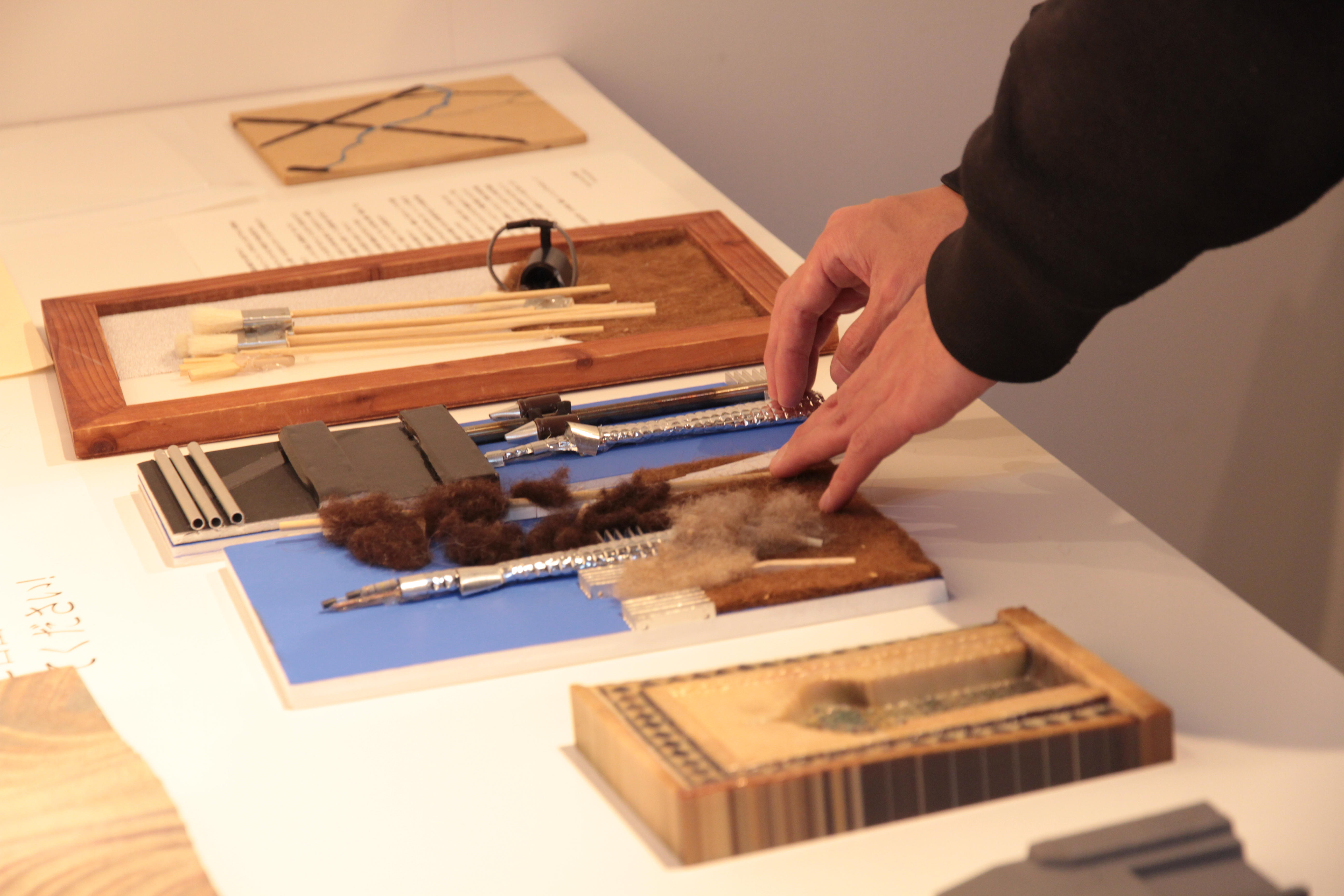 Michael Riedel, Filmed Film Trailer 2008
Courtesy of the artist and David Zwirner, New York
Michael Riedel, Filmed Film Trailer 2008
Courtesy of the artist and David Zwirner, New York
Stutter
The onomatopoeic word 'Stutter' refers to an act of speech interrupted by agitated, spasmodic, or involuntary repetitions. As the title for this exhibition, it suggests a metaphor for questions of disruption and discontinuity in processes of thought, systems of communications or conceptions of knowledge. The exhibition encompasses a wide range of artistic practices that incorporate repetition and interruption in order to convey meaning, whether through language, gesture, sound or images. In their highly methodical processes of work, Sven Augustijnen, Anna Barham, Dominique Petitgand, Michael Riedel and Will Stuart create a space for error, irrationality and transformation. Combining actions and strategies such as editing, quoting, translating, conversing, duplicating or indexing, these artists reveal a multiplicity of perspectives, directions and potentialities.
Michael Riedel (b1972, Germany)
Michael Riedel’s
Filmed Film Trailer (2008) derives from a 16-hour edit of footage from screenings of experimental films. From 1999 to 2002 over 40 hours of video recordings were made and the results were shown as Filmed Film events at Oskar-von-Miller Strasse 16 in Frankfurt/Main. The auto focus mechanism of the camera often wasn’t able to focus on the film and some of the shots are blurred and appear to be vibrating. Badly filmed, the image moves within the image or the film within the film disappears. Seldom are the original film and the filmed version identical in length, the life of the camera’s battery often determined the duration of the film. Using the programme Final Cut, Riedel distilled the assembly into a frenetic ‘trailer’ for
Filmed Film lasting 7 minutes. In the process, an overload of information produces an array of gaps, elisions and errors that create an entirely new work.
Four proposals for the
change of modern (2009) belongs to a series of works that Riedel began in 2008 for a group show at The Modern Institute in Glasgow. Cutting the word ‘modern’ from the gallery’s logo out of a piece of black fabric and turning the resulting banner on each of its sides, four new shapes were created by chance. Four proposals for the
change of modern foregrounds process by drawing distinctions and opening up an infinite number of abstract forms, which allows the word ‘modern’ to be read as an ever changing moment. Through these methods, Riedel effects a gradual degradation of form and disintegration of language.

























































